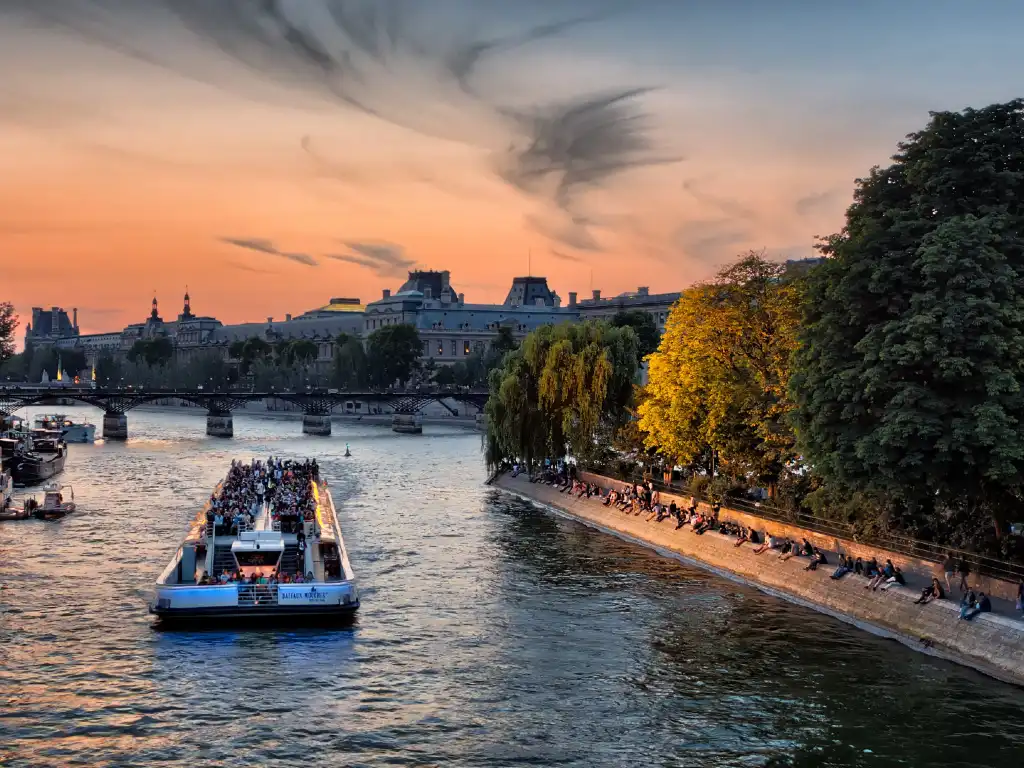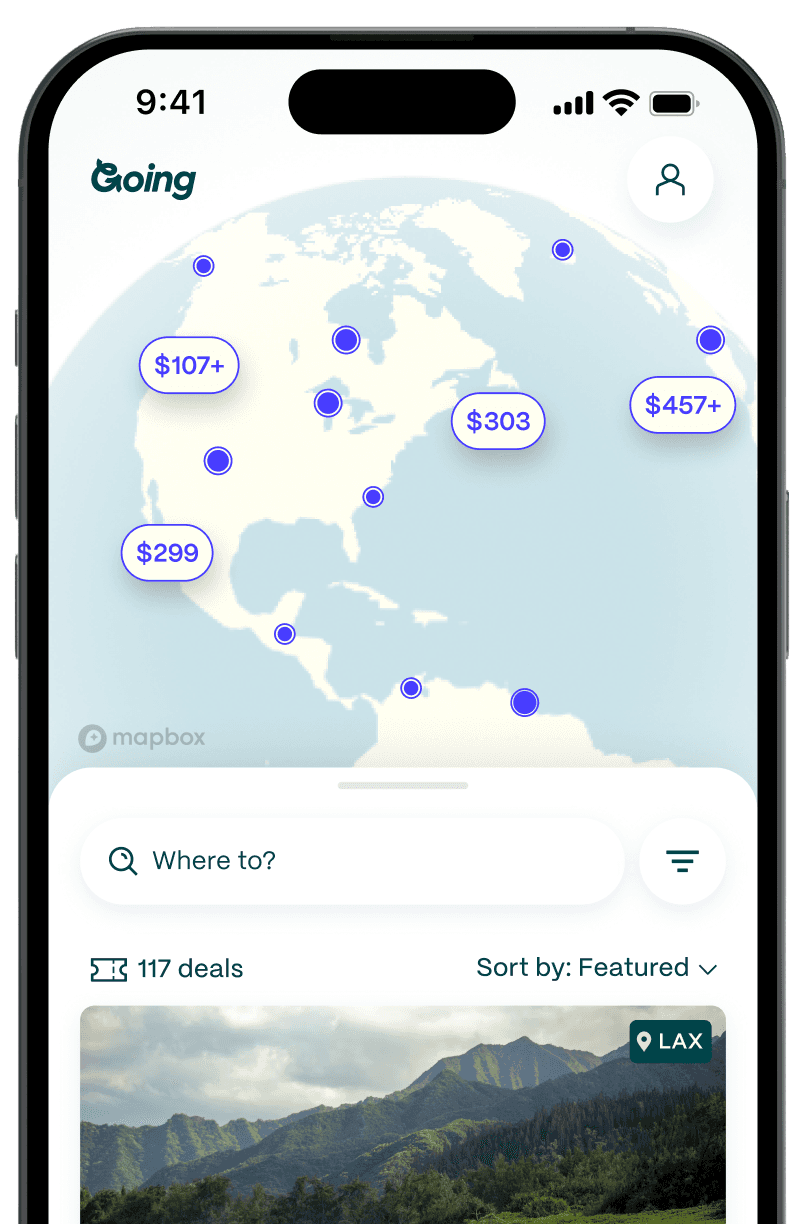
Paris Itinerary: How to Spend 2, 3, or 5 Days in Paris
Table of Contents
Paris is one of the most-visited destinations in the world—and with good reason. Rich in history, culture, art, fashion, fine food and wine, leafy parks, and stunning architecture, it has something to offer everyone.
Although Paris is relatively compact, geographically speaking, which makes it easier to tackle in just a few days, this dazzling capital offers so much to see and do that it pays to be strategic with your schedule. With more than 100 museums, hundreds of parks and gardens, thousands of monuments, and tens of thousands of restaurants, it’s easy to get overwhelmed when deciding how to map out your days.
In order to help you make the most of a short visit, here are some suggested 2-, 3- and 5-day itineraries designed to optimize your time, whether you’re a first-timer or a return visitor with limited time. While you could certainly spend the fifth day (or an entire lifetime) continuing to explore Paris, four days are enough to check the top sights off your list and open up the possibilities for a day trip if you’re fortunate enough to have another day left in your schedule.

2-day Paris itinerary: How to spend 2 days in Paris
Day 1: Museums, gardens, top attractions, and the Seine

After breakfast at your hotel or at the Louvre’s Café Marly (open from 8am), get an early start on the Louvre Museum. It’s wise to book time-slot tickets ahead of time. The museum is massive and can easily consume a full day (or several), so picking your “must-sees” and mapping out their locations prior to your visit is a good game plan.
Once you’ve had your fill of art and artifacts, have lunch at the Louvre’s Café Mollien, in the Denon wing, offering reasonably priced sandwiches, salads, and quiche, or, if the weather’s nice, head to the Pavillon des Tuileries kiosk in the Jardin des Tuileries for Mediterranean-inspired fare and open-air seating. Post-lunch, stroll or relax in the lovely Tuileries gardens. In summer, the Fête des Tuileries takes place in the gardens, with funfair rides and stands selling treats like cotton candy and crêpes.
After lunch, a quick visit to the Musée de l'Orangerie is a must for Monet fans to view his monumental Water Lilies series, designed specifically for two oval-shaped rooms.
A stroll through the Place de la Concorde affords a striking view down the iconic Champs-Élysées avenue to the Arc de Triomphe. You can then take Metro Line 1 from Concorde to the Charles de Gaulle–Étoile stop if you fancy a visit to the top of the arch.
Then hop on Metro Line 6 to the Bir-Hakeim stop and walk to the Eiffel Tower. A visit towards the end of the day means you’ll encounter smaller crowds (though it’s still a good idea to book tickets ahead of time) and the chance to see the tower and the panoramic views it offers in both daylight and after dark. The tower’s twinkling lights begin every evening at dusk and repeat for five minutes at the beginning of each hour until 11pm. At certain times of the year, the tower remains open until late.
After descending the tower, walk to the nearby Port de la Bourdonnais and board a Bateaux Parisiens sightseeing boat for an evening river tour, offering a unique perspective of Paris’s most iconic landmarks when they’re illuminated at night.
Day 2: Gothic churches, Impressionist art, literary cafés, and jazz

Start off with a classic continental breakfast at the typically Parisian Le Saint-Régis café on the Île Saint-Louis. A tartine (baguette with butter and jam), viennoiserie (croissant or pain au chocolat being the most popular), freshly squeezed orange juice, and a café crème will give you all the fuel you need for the first half of your busy day.
After breakfast, walk across the Pont Saint-Louis bridge to Notre-Dame on the Île de la Cité. Although the magnificent medieval cathedral is still undergoing reconstruction after it was partially destroyed by a fire in 2019, you can still admire its facade and flying buttresses, and its archaeological crypt has reopened for visits. The interior of the church and its towers, however, remain closed for now.
Next, walk to the nearby Sainte-Chapelle, another stunning Gothic church renowned for its dazzling stained-glass windows. It’s less than five minutes away on foot and also located on the Île de la Cité.
After your visit, cross the Pont Saint-Michel to the Left Bank and stroll along the Seine, pausing to browse at the bouquiniste stalls selling antique and vintage books, prints, and magazines on your way to the Musée d'Orsay. In this iconic museum installed in a former train station, you can view Impressionist masterpieces by the likes of Monet, Manet, Pissarro, and Renoir, amongst many other treasures.
When you’ve had your art fix, head to La Grande Épicerie, the vast food hall of the historic Le Bon Marché department store, to stock up on gourmet goods, then walk to the Jardin du Luxembourg for a picnic. After lunch, browse the chic boutiques and galleries of the Saint-Germain neighborhood, stopping for a coffee on the terrace of Les Deux Magots or Café de Flore.
After your coffee break and some people-watching, walk to the nearby Latin Quarter for dinner in one of its many bistros, then hit one of its underground jazz clubs, like the Caveau de la Huchette.
3-day Paris Itinerary: How to spend 3 days in Paris
Day 3: Craft coffee, Paris history, and the Marais

After starting off the day with locally roasted craft coffee and a gourmet breakfast at Café Coutume’s Marais branch on rue du Forez, take a short walk to the Musée Carnavalet for a deep dive into Paris’s past. This fantastic museum explores the city’s history, from Gallo-Roman times to the present, and reopened in 2021 after a multi-year closure for renovation. Highlights include the stunning Art Nouveau jewelry boutique designed by Alphonse Mucha in 1901, which once stood on rue Royale near the Place de la Concorde, and the reconstructed bedroom of Marcel Proust.
Next, grab an on-the-go lunch from one of the neighborhood’s legendary falafel shops, either celebrity favorite L’As du Fallafel or local staple Chez Hannah.
If you’ve got the energy for another museum, the Musée Picasso, installed in a grand, 17th-century mansion, holds a large collection of artwork and memorabilia related to the Spanish artist who lived and worked in Paris for decades. Or, for the more science-minded, the Musée des Arts et Métiers, Europe’s oldest science museum, is dedicated to scientific and technological inventions. Highlights of the collections include Lavoisier’s laboratory, Pascal’s calculators, Daguerreotype cameras, the Lumière brothers’ Cinématographe, and early aircraft. A third option is the Maison de Victor Hugo, the famous French writer’s private home, where he wrote a large portion of Les Misérables.
If one museum a day is your limit, you can simply stroll the streets of the Marais and browse the quarter’s art galleries, trendy boutiques, bookstores, and vintage shops.
For dinner, Le Colimaçon offers “bistronomy,” or updated takes on classic French bistro fare. The Marais remains lively after dark, with plenty of hip clubs and bars, such as the chic Serpent à Plume in the Place des Vosges.
5-day Paris Itinerary: How to spend 5 days in Paris
Day 4: Montmartre, Canal Saint-Martin, crêpes, and Père Lachaise

Throngs of tourists visit the Sacré-Cœur Basilica daily, but the crowds are worst around sunset when they fill the steps and terraces in front of the striking white church atop Montmartre hill to admire the panoramic views over the city. If you head there just before sunrise, however, you’ll have equally striking views, but have to share them with far fewer people. The church opens at 6:30am., so, depending on the time of year, you shouldn’t have to wait around for it to open, either. If you want to climb the steps to the top of the church’s dome, however, note that the dome opens for visits at 10:30 am.
The winding cobblestone streets of Montmartre are also less packed in the morning hours, so after visiting Sacré-Cœur, enjoy a stroll through the charming hilltop village to take advantage of the calmer atmosphere. When opening hour rolls around (9:30am), have brunch at Hardware Societé, an outpost of an acclaimed Melbourne café.
Next up, visit the Musée de Montmartre, a small but delightful museum offering a permanent collection dedicated to the history of this quirky, bohemian neighborhood as well as temporary art exhibitions. After your visit, have a coffee or tea at the museum’s café, nestled in its picturesque courtyard garden.
Then head to the trendy Canal Saint-Martin neighborhood, and for lunch, enjoy classic and creative Breton galettes (savory buckwheat crêpes) and sweet crêpes, as well as views of the canal at Breizh Café (It’s a popular spot, so you might want to book ahead of time).
It’s a pleasant stroll along the canal, the banks of which are lined with young Parisians drinking rosé in warmer months. Once you’ve had your fill of the waterfront atmosphere, take the Metro Line 2 from Colonel Fabien to Philippe Auguste to visit the Père-Lachaise Cemetery, the last resting place of famous personalities ranging from Jim Morrison and Oscar Wilde to Chopin, Édith Piaf and Gertrude Stein. You could easily spend hours wandering this sprawling, leafy cemetery, but when you’ve had your fill of dramatic tombstones, the nearby 11th arrondissement offers a wide range of choices.
There’s Septime for refined, contemporary French cuisine (reservations required far in advance), Le Servan for creative French-Asian fusion, or Brasserie Martin for classic French brasserie fare. Popine, an authentic Neapolitan-style pizzeria near the cemetery, is another option, though you’ll need to book ahead.
Day 5: Day trip to Loire Valley châteaux

While there are too many Loire Valley châteaux to visit them all in a single day, visiting several of the most important is certainly feasible, especially with a rental car. Get an early start from Paris to drive to the grand Château de Chambord. The drive takes approximately two hours. This grand Renaissance château, the largest of the Loire Valley châteaux, was built as a hunting lodge for King Francis I in the 16th century and is known for its intricate towers and double-spiral staircase. It’s also said to have been the inspiration for the Beast’s castle in the 1991 Beauty and the Beast film.
Have lunch at the Café d’Orléans, inside the château, where you can also taste wines from the château’s vineyards, then head to the Château de Cheverny, just 20 minutes away by car. This stately home, inhabited by the same family for more than 600 years, is said to have inspired the Château de Moulinsart, the home of Captain Haddock in the Tintin comics series. Another highlight here is the château’s pack of more than 100 resident hunting dogs.
After visiting Cheverny, drive to the Château de Chenonceau, approximately 45 minutes away. This magnificent château, one of the Loire Valley’s most beautiful and romantic, spans the Cher River in a series of graceful arches. It was a favorite residence of Catherine de’ Medici, and her elaborate gardens remain today. Spend a few hours exploring the château and its gardens before beginning the drive back to Paris, approximately two hours and 45 minutes away.
Key Paris travel details
Where to stay in Paris
If you’re a first-time visitor or have limited time, look for accommodations in central Paris. The 1st through 10th arrondissements are all quite central and will minimize travel time and costs for visiting the main sights.
For those on a budget, you might need to stay a bit further out to find a deal. Generator, in the 10th arrondissement, is a youthful and upbeat hostel with a basement club and rooftop bar, offering both dorm beds (about €23 per night) and private rooms (about €78 per night). Mama Shelter (about €120-140 per night), meanwhile, offers three Paris locations: Mama Shelter Paris East, Mama Shelter Paris West, and Mama Shelter Paris La Défense, all providing small but stylish rooms. MOB Hotel (about €103 per night), near the Saint-Ouen flea market, offers an organic Italian eatery and compact, clean rooms with industrial-chic decor. Some rooms have private terraces.
If you’re just popping into Paris for a night or two from London, the 25Hours Hotel Paris Terminus Nord (about €150 per night), located directly across the street from the Gare du Nord train station, might be a convenient choice. The brightly colored, funky rooms range in size from Small to “Extra Large Plus” and have hip amenities like record players and FREITAG bags.
If you’re looking for luxury, on the other hand, you’ll have no shortage of options, with five-star hotels ranging from small boutiques, like the plush and decadent Maison Souquet (about €550 per night) in Pigalle or the hidden, romantic Hôtel Particulier (about €750 per night) in Montmartre, to grandes dames like the elegant Hôtel de Crillon (about €1,750 per night), a Rosewood hotel in the Place de la Concorde, or the opulent, historic Ritz (about €2,100 per night).
How to get around Paris
Walking or taking advantage of Paris’s extensive Metro subway system are generally the fastest and easiest ways to get around the city, though taxis and Uber are also an option. Paper Metro tickets have been phased out, so you will need a rechargeable Navigo Easy pass. You can purchase a Navigo Easy at all station ticket counters and reload it either at counters or at automated machines. Single tickets cost €2.10, or you can buy a “carnet” (car-NAY) of 10 rides for €16,90. Alternatively, depending on how often you’ll be taking the Metro, a one-to-five-day Paris Visite pass might be the most cost-effective. It offers unlimited rides, including to airports, Versailles, and Disneyland Paris.
A car is not necessary in Paris and would be more of a headache than a convenience. For certain day trips, for example, visiting multiple Loire Valley châteaux or Champagne vineyards in a single day, where a car might be necessary, keep in mind that automatic transmission cars are less available (and more expensive) to rent in Europe.
When to go to Paris
There are pros and cons to visiting Paris at any time of year. Winter is best for lower prices and avoiding the high-season crowds, but the drawbacks are, of course, the weather, which can be cold and damp, with torrential rains, as well as more limited events and attraction hours.
The high-season summer months, on the other hand, will offer more picnic- and terrace-friendly days but also bigger crowds and generally higher accommodation and flight prices. The shoulder seasons of spring and fall are a great time to visit. Spring offers gardens in bloom, moderate temperatures, and more-moderate crowds and prices, though it can still be rainy, while fall offers wine harvest festivals and seasonal culinary specialties.
If there is any time period to be generally avoided, it is August. Besides potentially unbearably high temperatures, locals tend to exit the city in droves in August, and while major monuments and museums will still be operating, local shops, restaurants, and cafes might be closed for weeks or even the entire month.
Local holidays include Easter Monday, Labour Day (May 1), Ascension Day (mid-May, varies), V-E Day (May 8), the Fête Nationale (July 14, known in English as “Bastille Day”), Assumption Day (August 15), All Saints’ Day (November 1) and Armistice Day (November 11).
See Going's deals on flights to Paris, and join today to get cheap flights from all over the world delivered right to your inbox.
Read more about Paris
Last updated August 16, 2024









